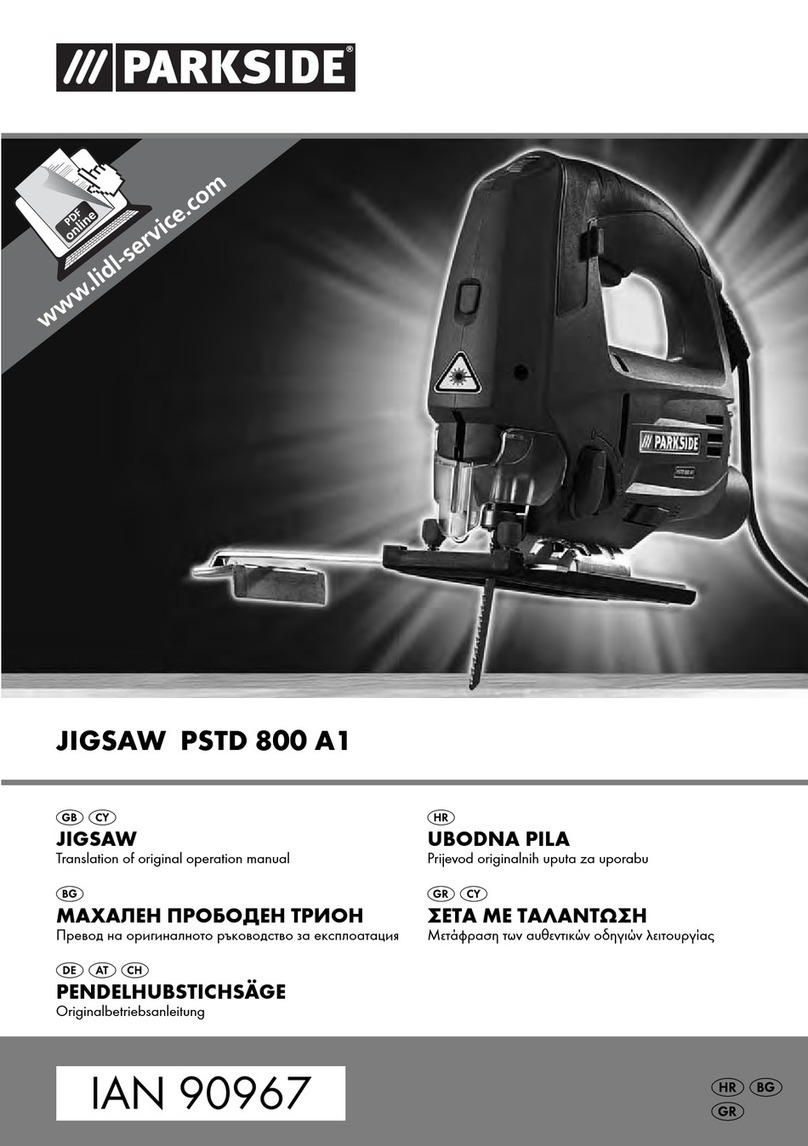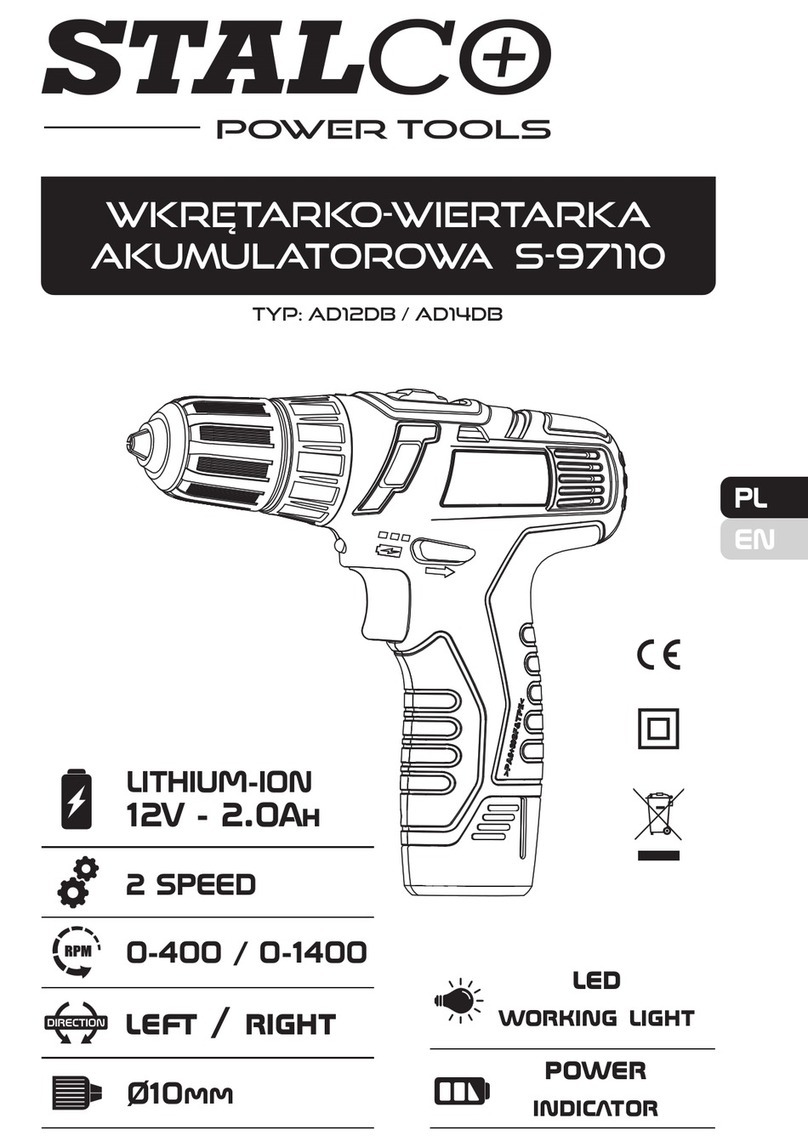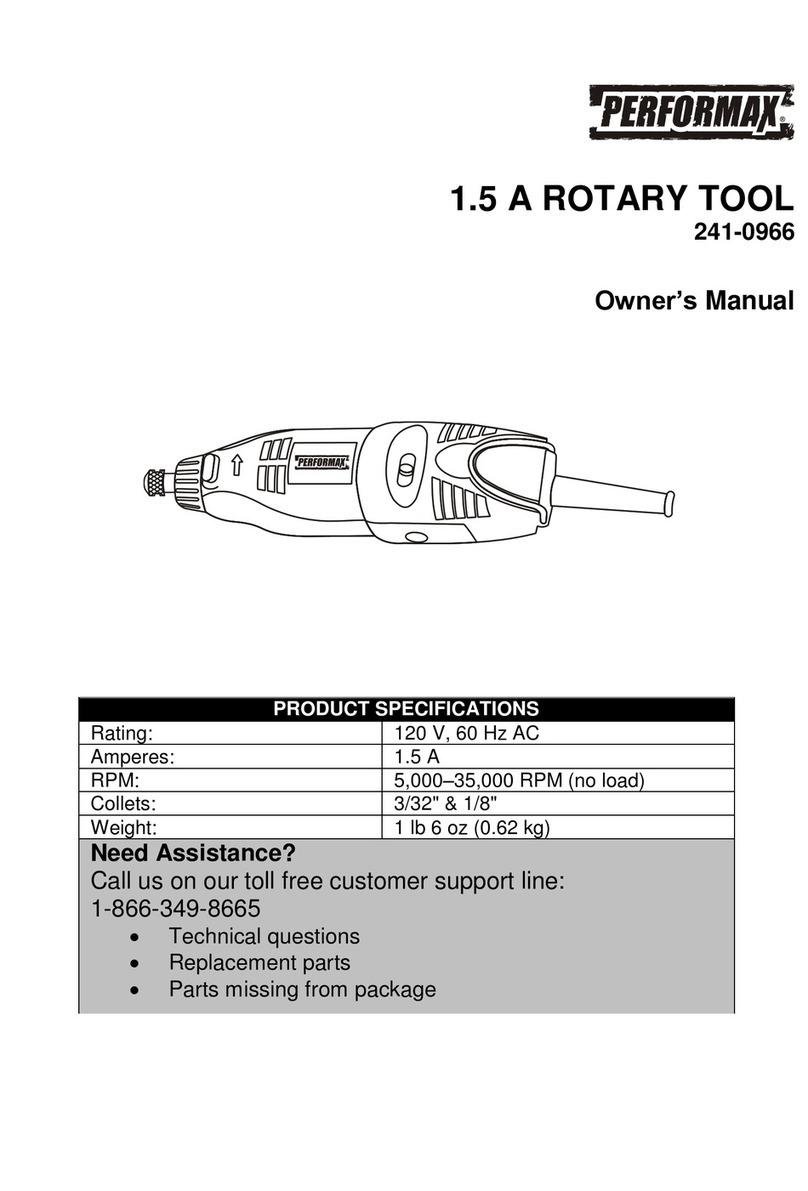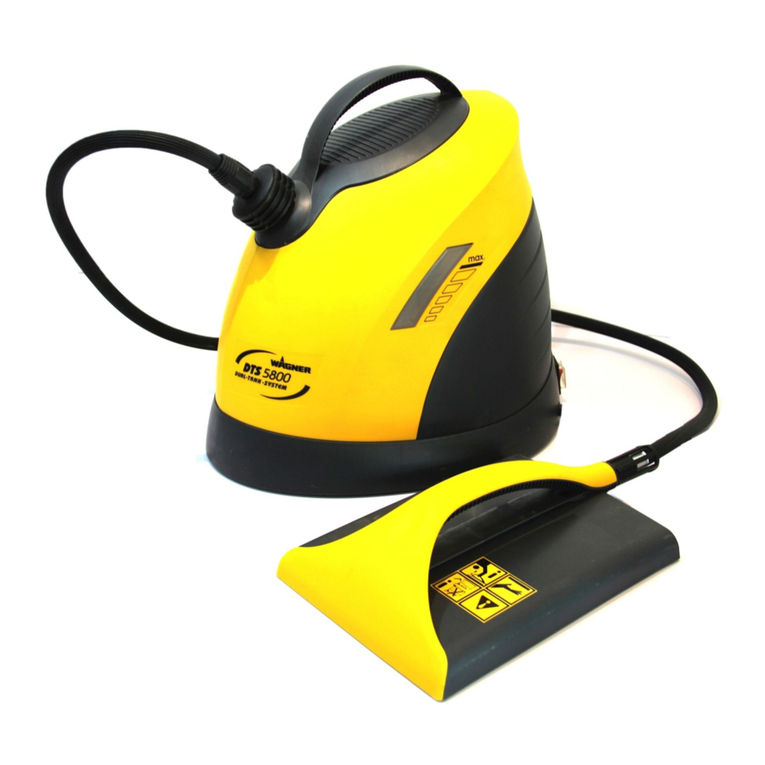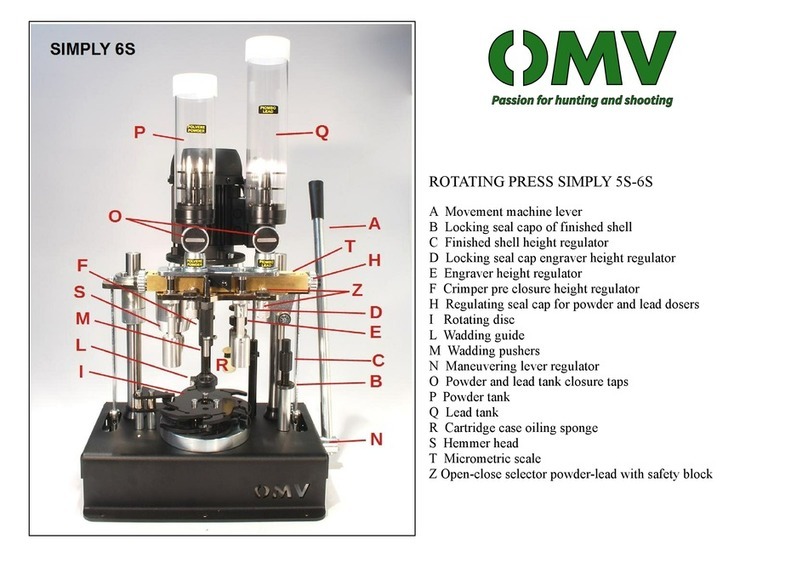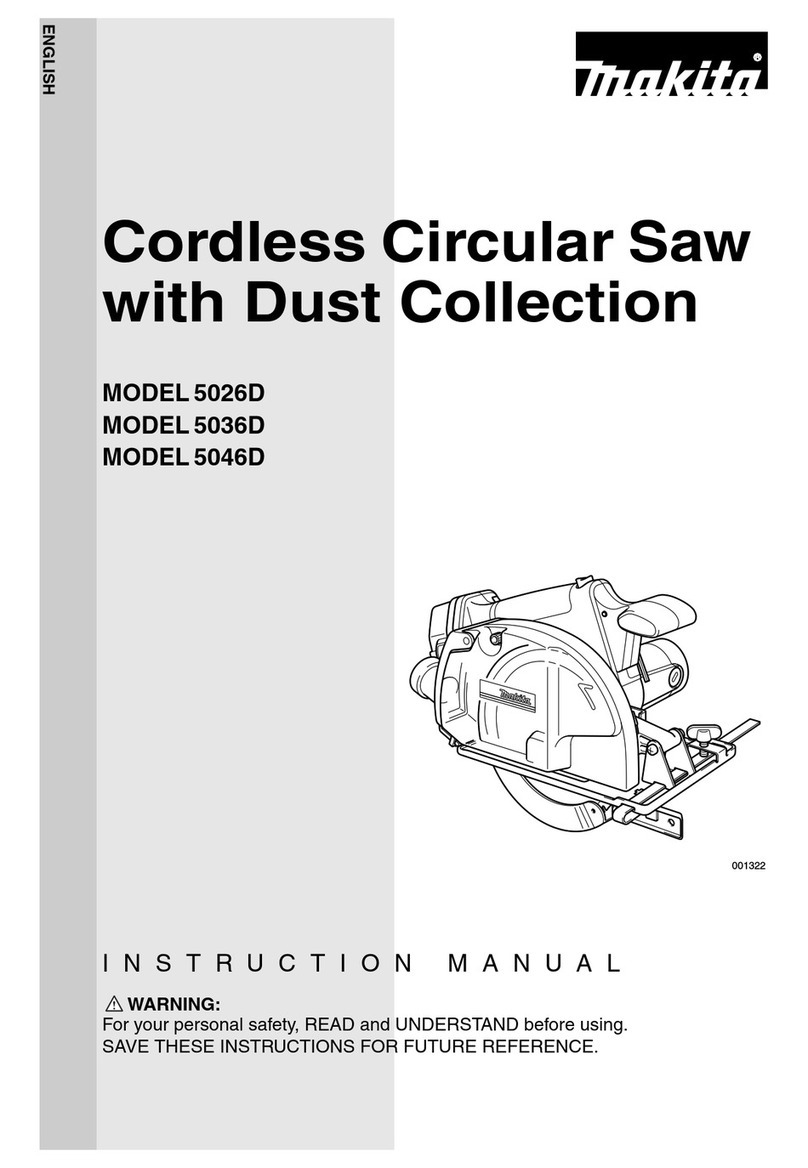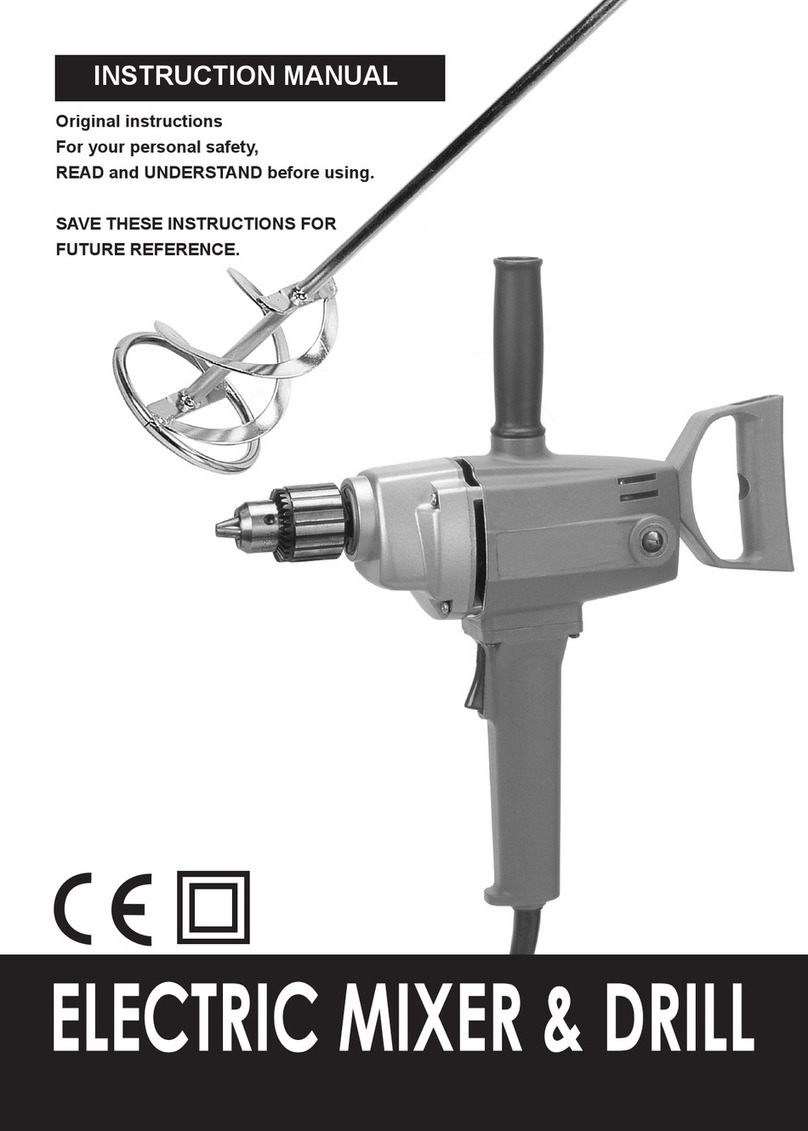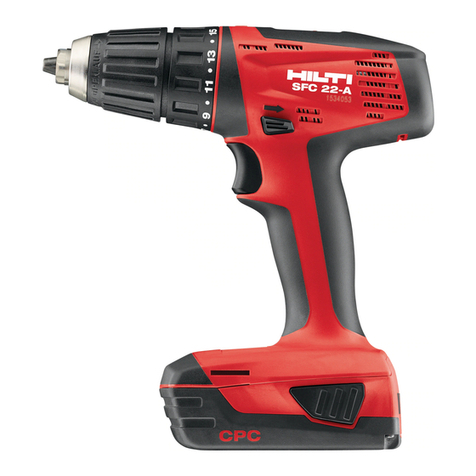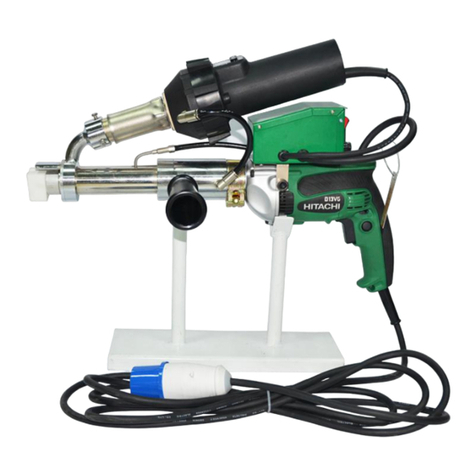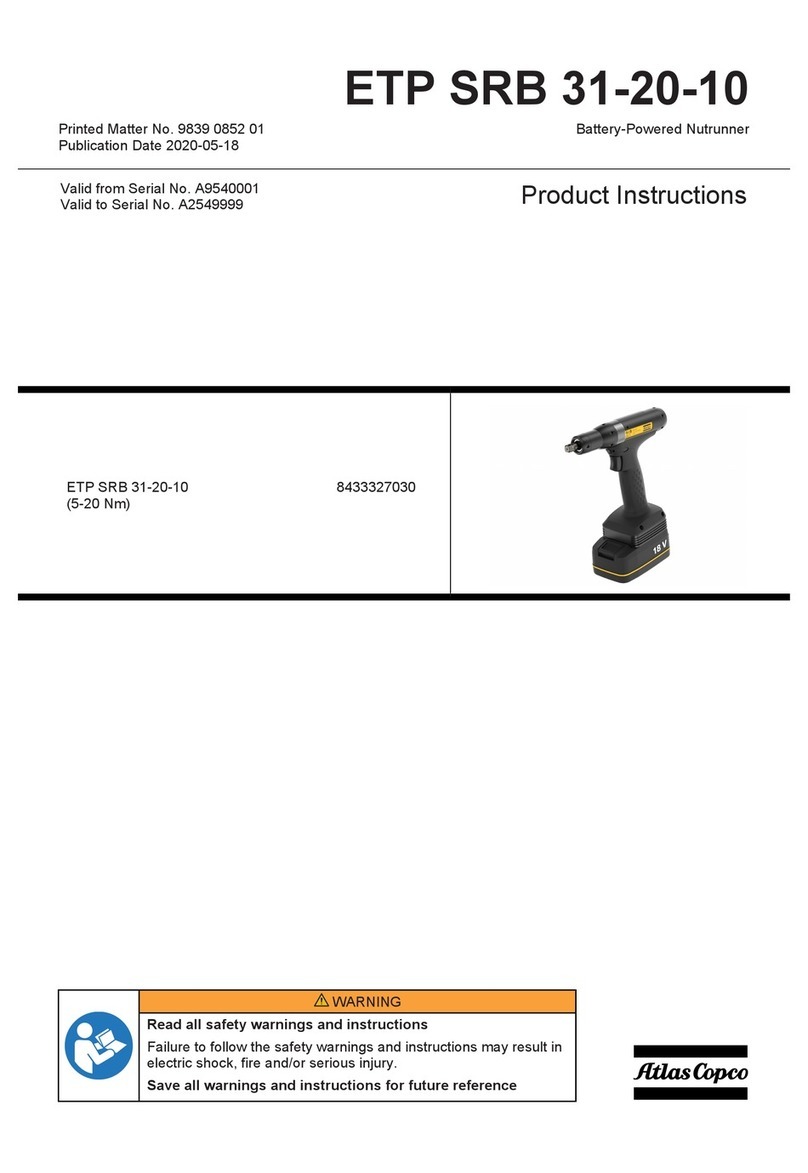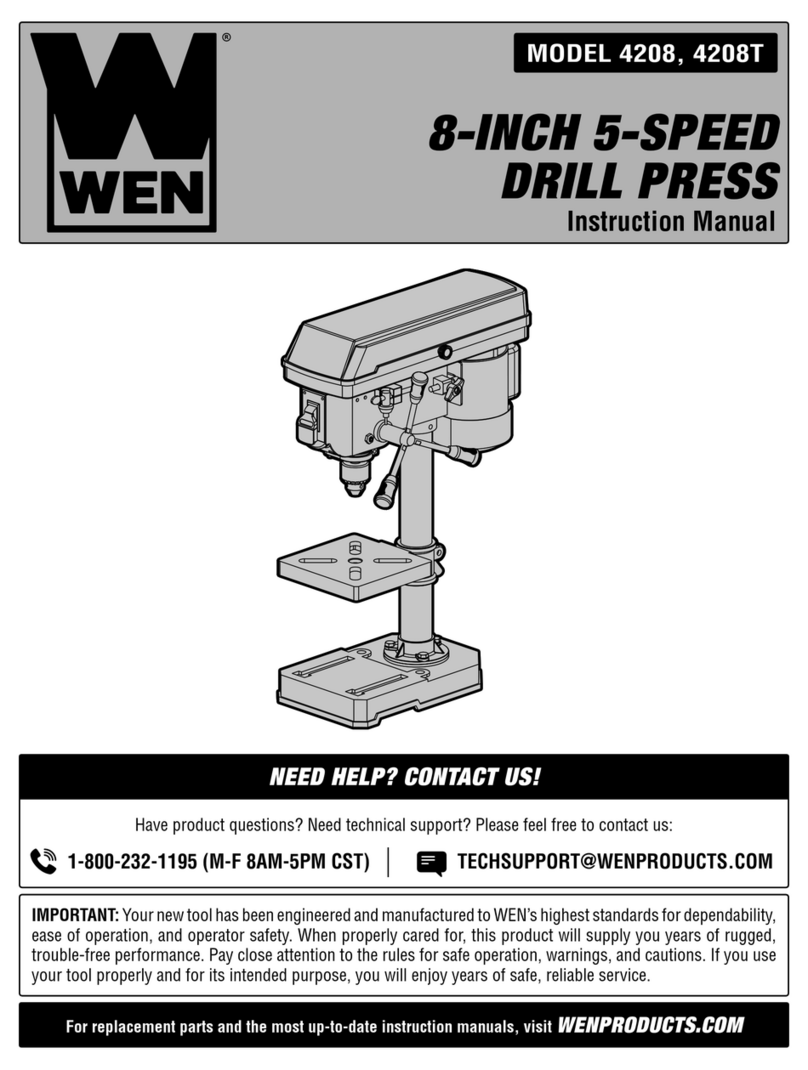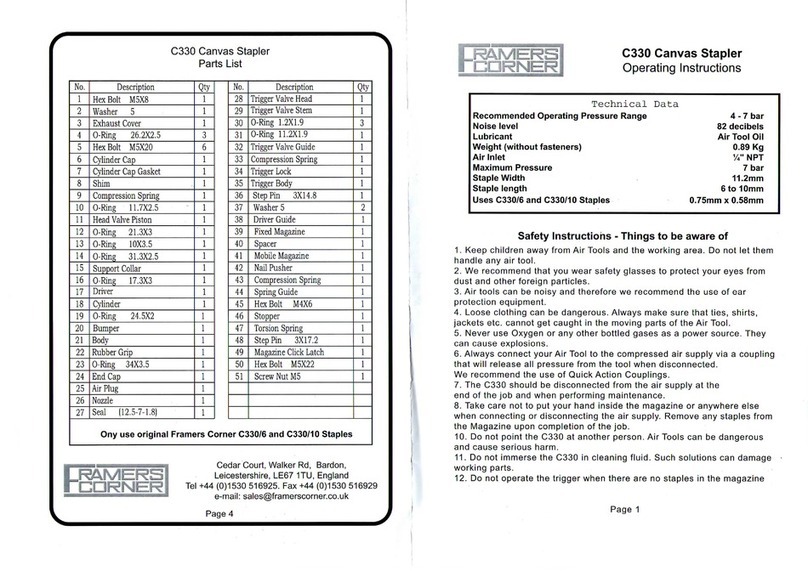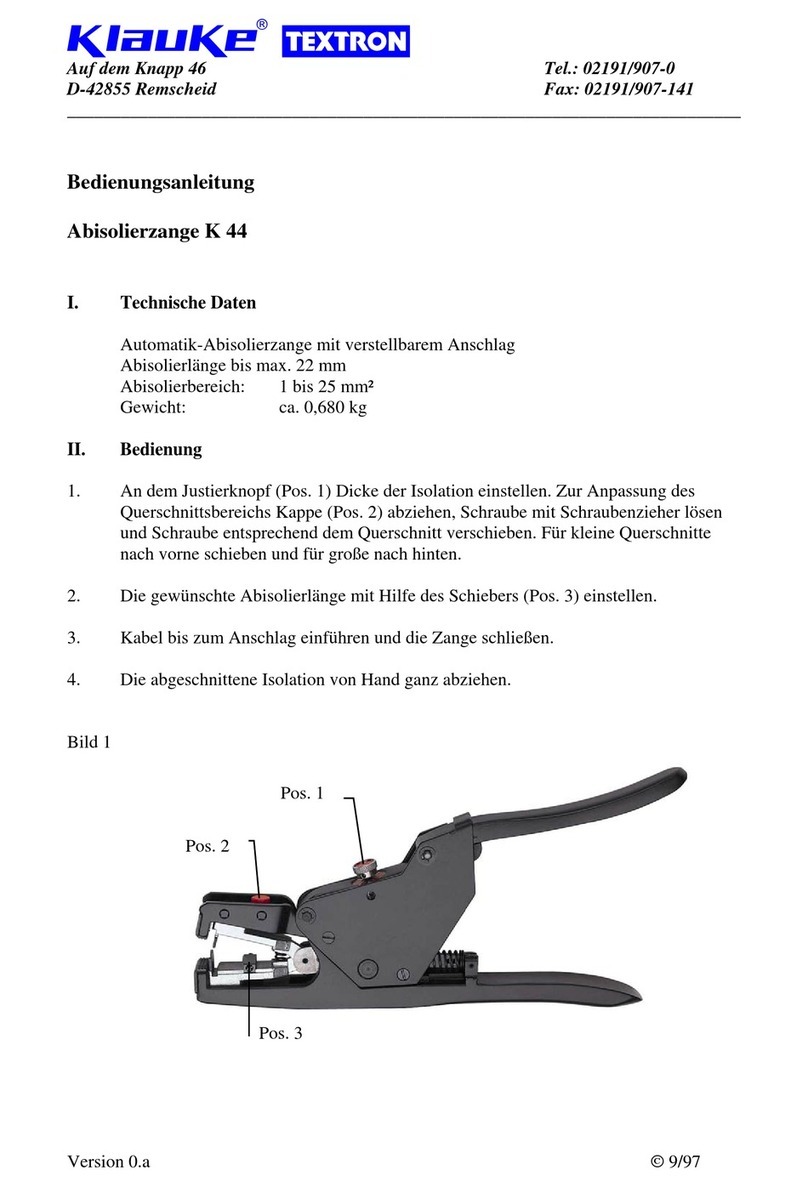Snow Glide Tools AF-1 User manual

AF-1(side and base edge model) Ski Edge Tuning Machine
Quick Start Guide and Operating Instructions for SnowGlide AF-1
Videos of machine operation are also available at www.verdonkracing.com
Personal Safety
It is very important to always operate in a clean and well lighted area and use personal safety equipment to protect your
health while operating grinding machinery
Dust mask: EN 149-2001 disposable dust mask minimum
Eye protection
Machine guard
Unplug machine power when changing stones or cleaning
Turn off power source when not in use
Cleaning
The magnets on the bottom of the machine will collect most of the dust but some dust will attract itself to the machine
Clean the machine often. Easiest to do with compressed air, by blowing out the dust around the machine and motor. To
extend motor life periodically blow compressed air in the slots at the back of the motor
A large soft paint brush will work well also when traveling and no access to compressed air
Check machine slides often (slides are in contact with the base of the ski) to make sure they remain clean and do not build up with
wax or other contaminates. Build-up on the slides will affect your angle accuracy.
Machine can be cleaned with light solvents such as Simple Green or WD-40
Power Source Placement
The power source is an electronic ac to dc power converter. It can attract the metal edge from tuning. To drastically prolong
the life of your power source, place the power source at the far back of your tuning bench. Or if you have dedicated tuning
area it is best to locate the power source up high on a shelf above your tuning area
Avoid placing the power source directly under the ski, this will attract unwanted metal to enter the power source and eventually
cause power source failure
AF-L Side Edge Use (see figures #3 from the owner’s manual)
Before you start to use the machine, make sure you have pulled back the sidewall bumper that is above the steel edge with a
sidewall tool, as you would normally if using a file and file guide. The same as a traditional file, the machine will not cut
properly and accurately unless the sidewall bumper is pulled back properly
Place ski in ski vises base up (as you would if waxing)
Place SnowGlide machine on the ski base as in Fig #3 on the long round slides which are on the bottom of the machine
With the dial on the top (#3) set your edge angle. Remember it is reflected in actual edge angle not what you might be use
to with traditional side bevel guides. The dial is accurate to the 10th of a degree, denoted by the red number in the counter
90 (0) degrees = 90.0
91 (1) degrees = 89.0
92 (2) degrees = 88.0
93 (3) degrees = 87.0
94 (4) degrees = 86.0
DO NOT GO PAST 5 (95.0) DEGREES–CAN DAMAGE THE DIAL AND THROW MACHINE OUT OF CALIBRATION
Lightly push the machine away from you until the roller bearings contact the side of the edge. This is your guide.
It is best to operate the machine from left to right
With the power off, lightly run the machine across the full length of the edge and make sure the grind wheel has no
obstructions with the vises, ski brakes or the power cable. You may have to move your middle vise out just a touch to insure
that you don’t hit the grinding wheel on the two end vises. Make sure the vises are tight
Holding the machine on the sides of the lower tray (#11). Pull the upper tray towards you with only your left index finger by the
lever with “U” shaped cut out (#12). This will make sure the grinding wheel is disengaged from the edge until you are ready.
Turn on the power of the machine with your right finger (#9). “I” is power on and “0” is power off. As long as you have the top
tray pulled towards you with your left index finger the grinding wheel is not engaged on the edge
The motor will have a slight start-up hesitation; once the motor is up to speed lightly push the lower tray (#11) towards the
edge so the roller bearings are in contact with the edge. Release the lever (#12) and start to move the machine along the edge
The grinding wheel is engaged by spring pressure, there is no need to push addition pressure on the grinding wheel
Once the grinding wheel is engaged slide the machine down the edge by holding only light pressure against the edge on the
lower tray (#11). Makes sure you are not applying additional pressure to the upper tray
When you arrive at the end of the pass, use the lever with “U” shaped cut out (#12) to help you disengage the grinding wheel
from the edge. You can dis-engage the grinding wheel at any time by pulling the lever (#12) towards you

Repeat these steps until you are satisfied with the edge sharpness
After you run the machine and you are satisfied with the angle. You can use a fine ceramic stone very lightly to put a fine and
final polish on the edge.
Base Bevel Use (see figures #1 and #2)
Important note on base bevel mode: Base bevel mode is designed to put an ultra fine polish on the edge. It is not designed to be a
work horse and pull skis into angles from flat. If you use the machine as a base edge grinding work horse the stone will be used up
extremely quickly. You will need to lightly pull your angle in via file and traditional style base bevel guides to a rough angle. Once you
have “roughed in“ the base angle, then you can pass the SnowGlide to uniform, clean and polish the edge
Make sure power is disconnected, so not to false start the motor (easy to do)
Unscrew the large nut on the left side of the machine (#1)
Fold the machine open so you have the 2 trays at 90 degrees (Fig 1 & 2)
Re-install the large screw (#1)
You will need to add spring tension and release the side edge stop (#13) in order for the machine to articulate to the edge. If
you do not perform this step you will be unable to perform base bevel work
On the back side of the machine pull up the tab/stub that is connected to the internal spring (#14). Then pull out the side edge
stop (#13) this will hold the spring tension tab/ screw out in the increase tension mode.
Place the ski in the vises base up (as you would if waxing)
Place the SnowGlide machine with the longer slides on the base
With the dial on the top (#3) set your base edge angle. Remember it is reflected in actual edge angle not what you might be
use to with traditional base bevel guides. The dial is accurate to the 10th of a degree, denoted by the red number in the counter
¼ degree = 89.25
½ degree = 89.5
¾ degree = 89.75
1degree = 89.0
1 ½ degree = 89.5
Lightly push the machine until the bearings on the short posts touches the edge. This is your guide
You will need to adjust the depth of the cut by using the threaded dial on the right side of the machine (#7). With light pressure
push the bearings against the edge and turn the dial until the grinding wheel is just touching the edge and a very small portion
of the base. Lock it into place, with the back locking nut (#8). This is a very important step to insure that you do not cut too far
into the base material and also make sure that you do not create a lip from the edge to the base, if you set the cutting depth
too short.
It is best to operate the machine from left to right
Hold the lower tray flat to the ski with your right hand (#6). Turn the machine power on (#9). “I” is power on and “0” is power off
With your left thumb push down on only the black covered knob/cylinder (#10) that is connected to the large spring on the left
side of the machine. Do not push down on the “U” shaped lever (#12) that you use when doing side edge. Allow the machine
to lower it’s self to the edge do not apply addition pressure on the upper tray. Run the length of the edge
When you arrive at the end of your pass release the knob/cylinder and the grinding wheel will disengage
It will be necessary to do the tip and tail sections of the base bevel by hand
Transportation
The AF-1 should be transported in side edge mode
Make sure to re-insert the wood block that your machine was shipped with between the top 2 trays for transport
Use the dial angle indicator to lightly clamp the wood transport block. Only light clamp the block down! Using the block for transport will protect
the accuracy of the angle indicator
The machine is durable yet it is a precision piece of machinery, make sure to wrap it well in padded material when transporting
A hard padded case is recommended if you travel often with the machine
Additional Tips and Notes for the best results
With new grinding stones, its takes roughly 15 to 20 passes to set/break-in the stone for the smoothest edge finish. Your first few passes with
a new stone will leave a rougher then desired edge.
Practice makes perfect. It will feel odd for several passes by the 5th pair of skis you will be a pro, by the 15th ski you will quickly learn how to
manipulate the machine to be able to get the entire tip and tail as well as feel comfortable to do over lapping strokes in difficult areas.
Run the machine from Left to Right
Use a Rough B181 Stone (sold separately) when you need to do a lot of work. Such as when pulling in a new ski from 90 degrees to 93
degrees or when grinding way significant edge damage.
The machine will leave light grinding marks on the edge, this is normal and actually is microscopically finer then when a edge is pulled by a
traditional file (even though the file looks more polished) Remember the machine is removing much less material then a file.
When first letting the upper tray round black lever (#12) loose to start grinding, think about driving a car. As you let the lever go start moving
the machine along the edge (similar to dis-engaging a clutch in a manual car)
On speed skis, if you are concerned about dust, place a strip of 2” Painter’s tape the length on the base before operating the machine (this will
keep the base and the machine slides clean and allow the machine to glide easier)
The machine angles are extremely precise. Most racers feel extremely confident right way with the true edge angles. It may take some racers
little time to get accustom to the true angle (most racers, due to their personal tuning technique are 1 to 2 degrees off from the actual file guide
they are using). If a racer struggles with the new machine cut angle try backing off 1 degree.
Check out www.verdonkracing.com for more info on the SnowGlide tuning machine

Grinding machine AF.1
English
EnglishEnglish
English
GENERAL SECURITY
WARNING
Read all instructions. Failure to comply with the instructions outlined below
can cause accidents such as fire, electric shocks and / or injuries. The term
"Power tool" used in the safety below includes both tools powered with
electricity network as tools powered by battery.
KEEP THESE GUIDELINES
.
1) AREA OF WORK
a) Be sure to keep your work area clean and well light. Dark and cluttered
spaces are conducive to accidents. .
b) Do not use power tools in an explosive environment, for example in the
proximity of flammable liquids, gases or dust. The sparks from power tools
can ignite fire or explode.
c) Keep children and visitors on the sidelines when using a power tool. They
could distract you and make you lose control of the tool.
2) ELECTRICAL SAFETY
a)
Power tool plugs must match the outlet. Never modify the plug in any
way. Do not use any adapter plugs with earthed (grounded) power tools.
Unmodified plugs and matching outlets will reduce risk of electric shock.
b) Avoid body contact with earthed or grounded surfaces such as pipes,
radiators, ranges and refrigerators. There is an increased risk of electric
shock if your body is earthed or grounded.
c) Do not expose power tools to rain or wet conditions. Water entering a
power tool will increase the risk of electric shock.
e)Keep the cord in good condition. Never use the cord for carrying, pulling or
unplugging the power tool. Keep cord away from heat, oil, sharp edges or
moving parts. Damaged or entangled cords increase the risk of electric
shock.
f) When working outside, use only extension cords designed to be used
outside. This will help avoid the risk of electric shock.
3)PERSONAL SAFETY
a) Stay alert, watch what You are doing and use common sense when
operating a power tool. Do not use a power tool while You are tired or under
the influence of drugs, alcohol or medication. A moment of inattention while
operating power tools may result in serious personal injury.
b) Use safety equipment. Always wear eye protection. Safety equipment such
as dust mask, non-skid safety shoes, hard hat, or hearing protection used
for appropriate conditions will reduce personal injuries. .
c)
Avoid accidental starting. Ensure the switch is in the off position before
plugging in. Carrying power tools with your finger on the switch or
plugging in power tools that have the switch on invites accidents.
d) Do not overreach. Keep proper footing and balance at all times. This
enables better control of the power tool in unexpected situations.
e) Dress properly. Do not wear loose clothing or jewelry. Keep your hair,
clothing and gloves away from moving parts. Loose clothes, jewelry or long
hair can be caught in moving parts.
4) POWER TOOL USE AND CARE
a)Do not force the power tool. Use the correct power tool for your application.
The correct power tool will do the job better and safer at the rate for which it
was designed.
b)Do not use the power tool if the switch does not turn it on and off. Any
power tool that can not be controlled with the switch is dangerous and must
be repaired.
c) Disconnect the plug from the power source before making any adjustments,
changing accessories, or storing power tools. Such preventive safety
measures reduce the risk of starting the power tool accidentally.
d)Store idle power tools out of the reach of children and do not allow persons
unfamiliar with the power tool or these instructions to operate the power
tool. Power tools are dangerous in the hands of untrained users.
e)Maintain power tools. Check for misalignment or binding of moving parts,
breakage of parts and any other condition that may affect the power tools
operation. If damaged, have the power tool repaired before use. Many
accidents are caused by poorly maintained power tools.
f) Keep cutting tools clean. Properly maintained cutting tools with sharp
cutting edges are less likely to bind, vibrate and are easier to control.
g)Use the power tool, accessories and tool bits etc., in accordance with these
instructions and in the manner intended for the particular type of power tool,
taking into account the working conditions and the work to be performed.
Use of the power tool for operations different from intended could result in
a hazardous situation.
5)
BATTERY TOOL USE AND CARE
a) Ensure the switch is in the off position before plugging battery pack.
plugging the battery pack into power tools that have the switch on invites
accidents.
b) Recharge only with the charger specified by the manufacturer. A charger
that is suitable for one type of battery pack may create a risk of fire when
used with another battery pack.
c) Use power tools only with specifically designated battery packs. Use of any
other battery packs may create a risk of injury and fire.
d) When battery pack is not in use, keep it away from other metal objects like
paper clips, coins, keys, nails, screws, or other small metal objects that can
make a connection from one terminal to another. Shorting the battery
terminals together may cause burns or a fire.
e) Under abusive conditions, liquid may be ejected from the battery; avoid
contact. If contact accidentally occurs, flush with water. If liquid enter in
contacts eyes, additionally seek medical help. Liquid ejected from the battery
may cause irritation or burns.
6) RÉPARATIONS
Have your power tool serviced by a qualified repair person using only
identical replacement parts. This will ensure that the safety of the power
tool is maintained.
CHARGER SAFETY
• To reduce the risk of injury, use rechargeable Plumb batteries only. Other
types of batteries could explode and cause serious injury, or damage to the
tool.
• Do not the shipper to rain or moisture.
• Do not use materials other than those recommended and supplied by the
manufacturer. The use of any other could cause fire, electric shock or
serious injury.
• To avoid damaging the shipper and the power cord, do not pull on the cord
but the plug to unplug the charger.
• Make sure the power cord is positioned so that no one could step on it, get
caught in the feet, or damage it in any way.
• Use an extension only if absolutely necessary. Using an improper extension
cord can cause a fire or electric shock. If you must use an extension cord,
make sure that:
A) The charger plug contains the same number of pins that the capture of
the extension and that these are the same size and the same shape.
B) The extension is in good condition and has sufficient capacity to carry
the required tension.
• Do not use the charger plug or if the cord is damaged. If any of these
elements is damaged, have it repaired by a qualified technician.
• Do not use the charger it has received a blow, if it is dropped or if it was
damaged in any way. Have it repaired by a qualified technician.
• Do not dismantle your charger, have it repaired or maintenance by a
qualified technician. A non-conforming reassembly of the device can lead to
risk of electric shock or fire. .
• To reduce the risk of electric shock, unplug the charger before its
maintenance or cleaning. Putting charger to "stop" does not reduce the risk
of electric shock.
• Unplug the charger when not in use. To avoid the risk of electric shock, do
not touch the parts not isolated from the output connector or unprotected
terminals of the battery.
Keep these instructions. Check them regularly and use them to inform
other potential users. If you lend this tool also lend this manual.
1

FONCTIONNING
BATTERY LOADING
The battery in your tool is delivered very weakly loaded to avoid possible problems.
Therefore, you must load before use.
Note: The battery will not load completely at the first charge. Several charges (using
the tool and then charging) will be necessary to ensure that your battery is at its full
capacity.
FOR BATTERY LOADING:
• Remove the battery from his bag.
• Use only the charger supplied with the battery.
• Ensure that the voltage is 230 volts, 50 Hz, CA only (normal household voltage).
• Plug the charger to an electrical outlet.
• Make sure that the charger plug and the entrance are properly connected.
• The light is located on the shipper must light up when the charger is connected to a
power supply. This light indicates that your tool is charging, it remains lit until the charger
is disconnected from the power supply.
• After normal use, it must be 3 to 5 hours to charge the battery fully and minimum 5 hours
to recharge a battery completely discharged.
• DO NOT place the charger in a place where the temperature is extremely low or high. Its
operation will be optimal at a temperature between 10 °C and 38 °C .
IMPORTANT INSTRUCTION REGARDING HOT BATTERY LOADING
When you use your tool continuously, the battery becomes hot. When the battery is hot, you
have to let it cool for 30 minutes before recharging.
INSTALLATION OF THE BATTERY
1) Put the switch of the grinding machine on the "0" position.
2) Insert the battery in the bag. Leave out the length of cable needed.
3) Connect the battery to the machine, do a quarter turn with the security ring.
BATTERY STORAGE
1) Put the switch of the grinding machine on the "0" position.
2) do a quarter turn with the security ring and unplug.
3) Roll the wire carefully and store it in the front pocket for this purpose (in the bag).
POWER TOOL SWITCH (Fig. 2 & 3 n°9)
•
To start the grinding machine, put the switch on the "I" position.
•
To stop the grinding machine, put the switch on the "0" position.
LOCKING FUNCTION
The plug can be disconnected. his function helps to avoid accidental starts of your
grinding machine when not in use. The disconnections is imperative during storage in
bag.
USE OF THE GRINDING MACHINE
Your grinding machine is expected to sharpen the steel edges of the skis, snowboard
and nothing else. Any other use could damage the machine and grinding stone.
It is designed to perform one after the other tuning side and the lateral side of an edge
with a very precise angle that you can set your own between 92 °and 84 °.
CHOICE OF THE POSITION OF WORK (Fig. 1)
A) To change from the position tuning machining to the position side machining:
1) Drop the machine grinding stone face near the table
2) Unscrew the No. 1 screw completely
3) Maintain the body of the machine and make the support base rise near the
body.
4) Check that the tensioner blockage n°13 and tensioner n°14 are well pushed.
5) Replace the No. 1 screw to firmly lock the No. 2 slide.
B) To change from the position side machining to the position tuning machining::
1) Drop the machine grinding stone face near the table.
2) Unscrew the No. 1 screw completely
3) Maintain the body of the machine and down the support base near the table.
4) Pull on the tensioner n°14 to take out le tensioner blockage n°13 . NB : If the
tensioner blockage Is not sufficiently out, the grinding stone cannot machine
the steel edge
5) Replace the No. 1 screw to firmly lock the No. 2 slide.
TUNNING POSITION MACHINING (Fig. 2)
A) Adjust the angle through the button on the position indicator No. 3. The red
figure indicates tenths of a degree.
B) Drop the machine on the ski n°4. firmly tight in the grip, base up.
C) Maintain the machine near the steel edge n°5. by pressing on the black ruler
n°6.
D) Set the penetration of the grinding stone on the ski by the button n°7 to
machine only the steel edge and then block the counter nut n°8
E) turn on the machine
F) Down the grinding stone on the steel edge with the push n°10
G) Make the machine slide along the ski maintaining it pressed against the steel
edge.
SIDE POSITION MACHINING (Fig. 3)
A) Adjust the angle through the button on the position indicator No. 3. The red
figure indicates tenths of a degree.
B) Drop the machine on the ski n°4. firmly tight in the grip, base up.
C) Maintain the machine against the steel edge by pressing on the n°11
faces.
D) With the left hand ,move the grinding stone away from the steel
edge by pulling on the square n°12.
E) turn on the machine.
F) Slacken the square slowly.
G) Make the machine slide along the ski maintaining it pressed against
the steel edge.
GRINDING STONE CHANGING
Put the switch of the grinding machine on the "0" position and disconnect the
battery.
Withdraw the carter, firmly maintain the grinding stone near the belt, unscrew
the knurled nut and to withdraw the grinding stone. .
Set the new grinding stone and screw up the nut without tool, put back the
carter.
IMPORTANTS NOTES
•
For safety reasons the carter must always be in place during the
machining.
•
It is imperative to regularly eliminate dust which accumulates under
the carter.
•
During the side machining it is imperative to remove previously with
an over boarding tool, la plastic strips along the steel edge to avoid
gases emanations due to the heating of plastic during the machining.
•
It is impossible to machine the extremities of the ski in tuning
position . Extremities should be hand made .
•
The machining direction against the steel edge has no importance on
the final result.
MAINTENANCE
WARNING
•
Only spare parts of origin must be used for replacements. The
use of any other part is likely to present a danger or to damage
your tool. Do not use solvents to clean the parts. The majority of
the plastics are likely to be damaged by solvents available. Use a
brush and a clean rag to clean the impurities, dust, etc.
•
Plastic elements should never come into contact with brake fluid,
gasoline, products containing oil, penetrating oils, etc. These
chemicals contain substances which can damage, weaken or
destroy plastics.
•
do not overuse your electrical tools. The abusive uses can
damage the tool as well as the machined piece.
•
Do not try to modify your grinding machine, or to add accessories
which are not recommended. Such transformations or
modifications relieve of the abusive use and are likely to create
dangerous situations which can involve in serious body wounds
.
ENVIRONNEMENTAL PROTECTION
-
Recycle raw materials instead of throwing them. For the respect of the
environment, sort your waste and throw the worn tool, the
accessories and packing in special containers or with
organizations in charge of their recycling.
2
CARACTERISTICS
Model....................................................AF.1
Tension....................................................12V
No-load speed ..........................................7500 mn-1

Fig . 1
Fig. 2
Fig. 3
Table of contents

